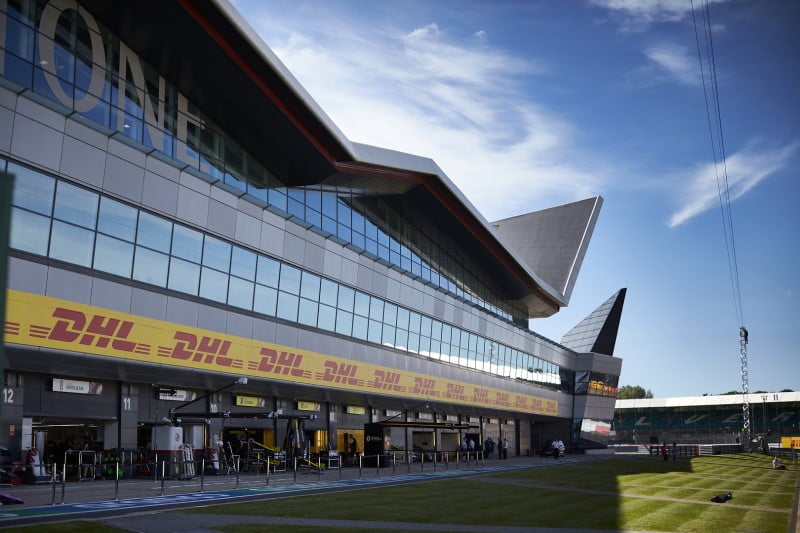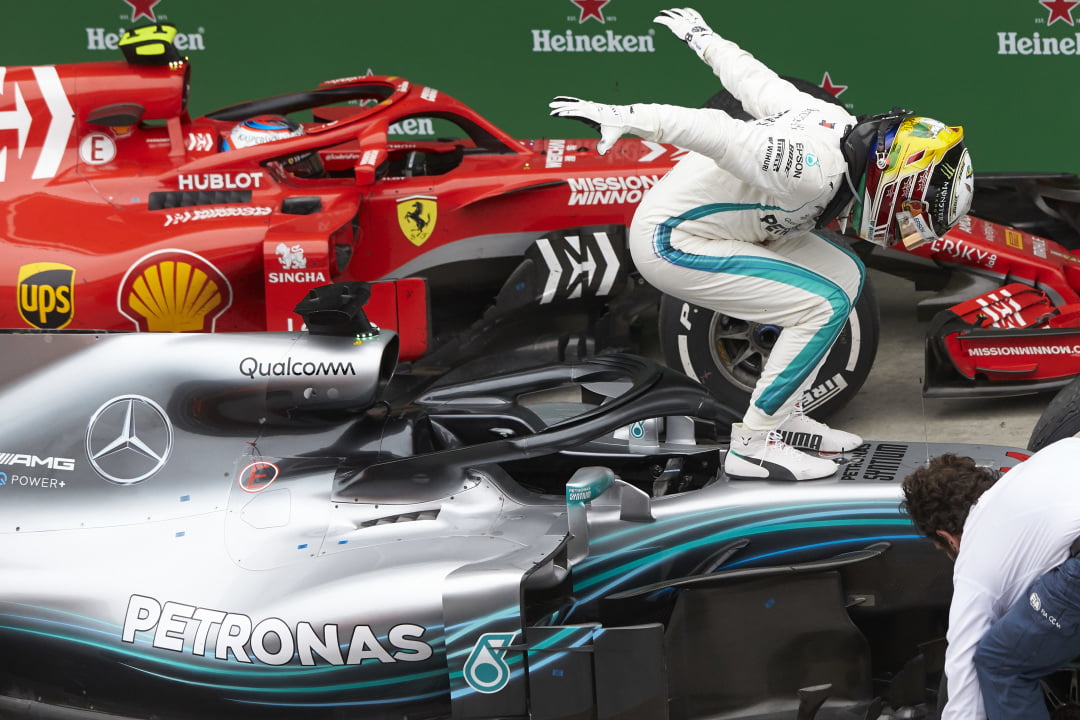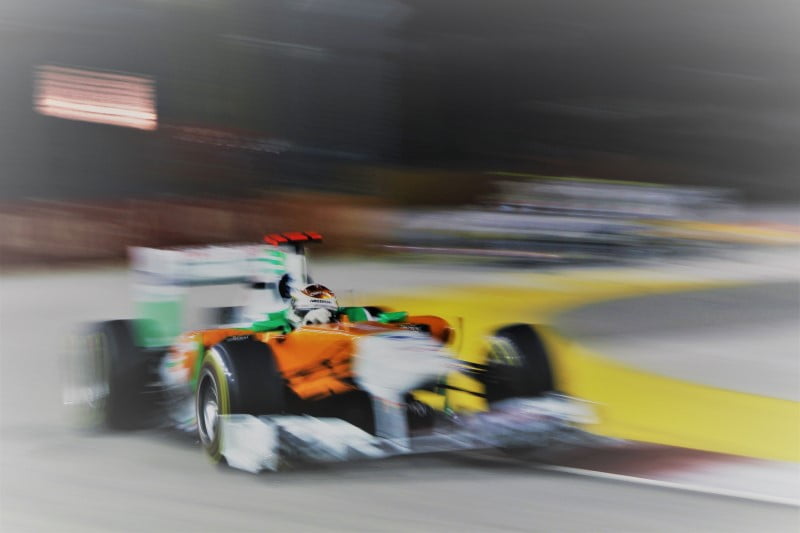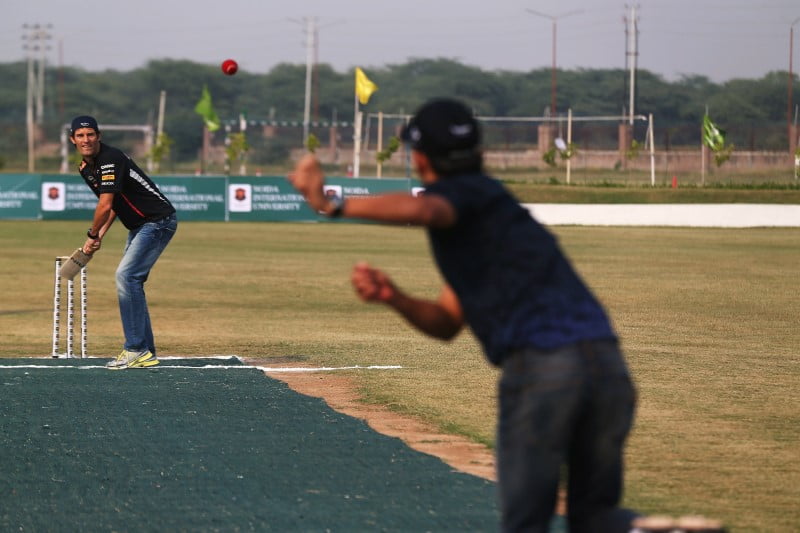‘Know Your F1 Circuit’ is a new series launched on my F1 blog. The posts under this series will be penned by Saumil Patel, an avid fan of the sport. You can follow the full series throughout the season by using the ‘Know Your F1 Circuit’ tag. This week’s post focuses on the ‘Red Bull Ring’, the venue of the Styrian & Austrian Grands Prix.
County Northamptonshire is home to some very momentous and picturesque landmarks.
A few stand out, Sulgrave, where former US President George Washington’s ancestral home stands. Stoke Bruerne, a stunning canal village and of course the iconic British Grand Prix home circuit, “Silverstone Circuit” near the villages of Silverstone and Whittlebury.
F1 History & Stats: Silverstone – The ‘Mutton Grand Prix’!
The first spur-of-the-moment motor race took place in 1947 between a group of twelve friends over a two-mile circuit on a deserted RAF bomber station in Silverstone. During the course of the race a sheep was run over and killed. Although the car was totaled, the driver escaped unhurt. Later the race was nicknamed as the “Mutton Grand Prix”.
The Royal Automobile Club, founded in 1897 to promote automobiles “horseless carriages” had emerged as the single largest influential motoring organisation post World War II. They were determined to start Grand Prix racing in Britain and were scouting for low capital tracks. Airfields were determined to be best suited sites and they zeroed in on Silverstone, a then defunct RAF bomber station.
In 1948 the Royal Automobile Club leased the airfield to formalize the racing and hosted its maiden British Grand Prix. The first two races utilized the runway straights with tight hairpin corners demarcated by oil drums and hay bales.
The following year it was decided only to use the perimeter track which ran through Copse and Maggots doubled back just after Becketts, going along the runway and back to Woodcote. The pit facilities were located between Abbey and Woodcote. This layout was used for the International Trophy races between 1949 and 1951.
Incidentally the foundational British Grand Prix Formula 1 Championship race was held on 13th May 1950 with the Queen in attendance.
In 1952, the pits and paddock were located between Woodcote and Copse, a few minor corner revisions were incorporated and the start/finish line was relocated. Much of the layout remained the same up till 1990. Over the years most revisions have been made to enhance the safety standards. In 1964, an elevated new pit lane was built to increase driver and support staff safety. In 1975, new pit garages were added along with a chicane at Woodcote to avoid a repeat of the 1973 debacle, which was then Formula 1’s biggest pile-up. Most drivers affected were fortunate with the exception of Andrea de Adamich who sustained serious injuries that ended his career.
F1 History & Stats: Silverstone – Maggots, Becketts, Chapel
By the mid 80’s “turbo era” the then blistering speeds had to be tamed due to safety concerns. The sausage bend chicane at Woodcote was reconfigured into a sharp left – right bend on its approach. Upwards of a million pounds were spent on the forty new garages, pits, and a new press center for the 1988 British Grand Prix.
Between 1990 and 1991 the track was completely redesigned. The Becketts corner was revised into a series of high-speed corners emerging as the new Maggots – Becketts – Chapel sequence and the run-off at Corpse revised with a tighter entry with a diverted corner. A traffic bridge was added to the hangar straight and the Stowe corner was tightened, reducing speeds.
The tragic deaths of Roland Ratzenberger and Ayrton Senna at Imola in 1994 prompted the FIA to reevaluate track safety standards. All track safety features were to be revised and modified to meet the new updated safety guidelines. By 1996, the starting grid was widened to seventeen meters, the flat-out Abbey kink was revised to a chicane and the Stowe corner modified to have an improved run-off area.
Then onwards regular infrastructural investment has helped create the triangular course facilities for the Silverstone Racing School, the Priory / Brooklands / Luffield complex, a four-lane entry road joining of the M1 and M40 motorways and Silverstone Wing built between Copse and Abbey. The ”Silverstone Wing” houses the pit and paddock. The building is 390m in length with a maximum height of 30 meters featuring changing roof lines charting the speed of the circuit, ending upwards into the sky on the last corner.
F1 History & Stats: Silverstone Circuit Details
Over the years, frequent layout variations and revisions have been made but the circuit’s DNA remains unchanged. It remains one of the fastest circuits on the Formula 1 calendar with speeds averaging around the 235 km/h mark. Two DRS zones (Corners 5 & 14) and ample flat-out opportunities on corners one and two, between corners five and six, past corner eight through eleven and corner fourteen through sixteen.
The circuit features six fast and technical straights, fourteen high speed corners and four low speed corners, making it a low brake wear, high full throttle usage circuit complemented by a high downforce setup. A high-speed all-rounder if you will, with sweeping corners and hard braking zones.
The iconic Maggots, Becketts and Abbey sections have influenced the design of many Formula 1 circuits, a prime example being the Circuit Of The Americas. Silverstone is also the third longest circuit on the calendar.
- Circuit Certification: Grade 1
- Circuit Classification: Permanent Race Circuit
- Circuit Direction: Clockwise
- Pole Position: Left-hand side of the track
- Circuit Length: 5.891 km
- Race Distance: 306.332 kms
- Longest Flat-Out: 1034 m
- No. of Laps: 52
- Track Width: 14.5 m to 17 m
- Track Elevation: 196.2 m to 207.5 m
- Number of Corners: 18 (10 Right + 8 Left)
- Gear Changes Per Lap: *40
- Fuel Use Per Lap: *2.8 kg
- Lap Record: 1:27.097 min – Max Verstappen, 2020 – Red Bull Racing RB16
- Record Pole: 1:24.303 min – Lewis Hamilton, 2020 – Mercedes W11
- Inaugurated: 1948
*estimated
Lewis Hamilton has a stellar record at Silverstone, if there’s a place to launch an assault on Max Verstappen’s 32-point lead in the title race, it’s here, in front of the passionate British fans.
Sensational move, popular win ?@nigelmansell doing what he did best #OnThisDay in 1987 ?#BritishGP ?? #F1 pic.twitter.com/2MsA14WKzb
— Formula 1 (@F1) July 12, 2021
Did You Know?
- The 1963 and 1965 races had an all British podium
- At the 1969 British Grand Prix Jackie Stewart won and lapped every car by the end of the race
- The 1973 British Grand Prix saw a massive pile up, also the largest in Formula 1 history. Ultimately, 11 cars retired
- 12 British drivers have won the British Grand Prix – Hamilton’s 7 wins being the most for any driver
- 2013 witnessed six drivers suffering tyre blow outs
- The average speed for Formula 1 cars at the British Grand Prix is around 145mph
- 188mph & 4.5 lateral G-force is common on Maggots corner
- The first British Grand Prix at Silverstone was won by an Italian driver, Giuseppe Farina driving an Alfa Romeo
- 351,000 spectators attended the Grand Prix in 2019 – highest in the history of Formula 1
- The 1999 British Grand Prix saw the highest number of helicopter movements – 4000+, holding the record for busiest airport for a single day
- The world’s biggest ‘Classic Car Festival’ is held at Silverstone
Saumil Patel is an avid fan of Formula 1. He aims to take you deeper into the sport by uncovering the lesser read.














